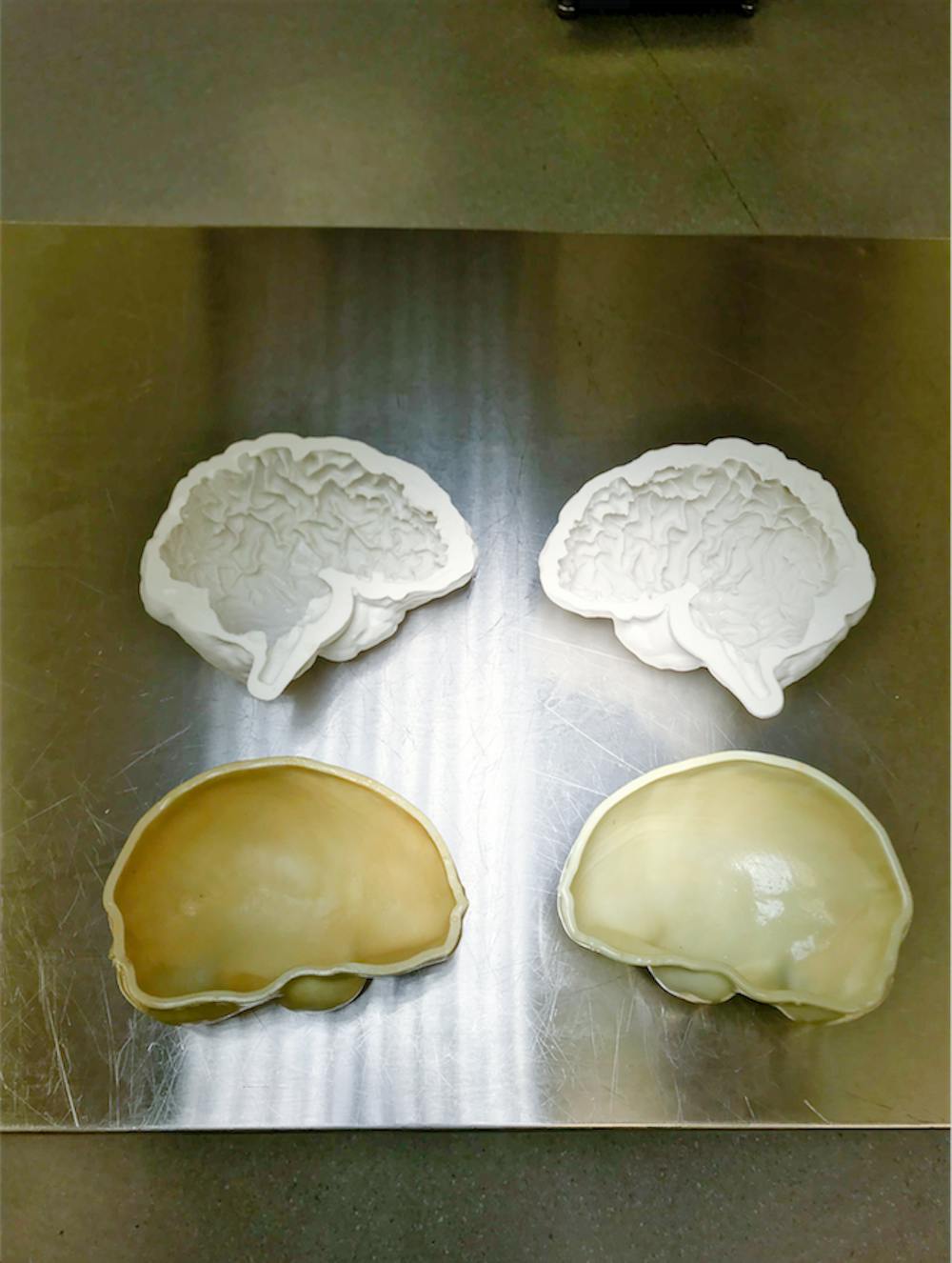Neurosurgeons could one day thank Ollin Venegas’ MD’20 presentation to high school students for allowing them to create detailed brain models of their patients. Venegas has been developing 3D models of the human brain, aiming to provide an educational tool and tactile illustration of the effects of concussions and other head traumas. Working alongside Zak Ziebell ’19, a RISD dual-degree student, Patrick Rashleigh, a data visualization coordinator for the University and other group members, Venegas has created a model that shows both the internal and external impacts of head injuries.
Venegas has been interested in head trauma and its effects from a young age. He began the project to illustrate trauma in a presentation he gave last summer to high school students. By encasing a ballistic gel solution in a mold and placing the model brain in a skull, Venegas was able to illustrate the damage to neurons and other internal workings of the brain when trauma occurs. The model served as a means to illustrate “what happens to the brain when you can’t see (it), ” Venegas said. His model is also cheaper than alternatives and highlights head injuries in innovative ways, he added.
Venegas later approached Rashleigh to begin work on creating a more simplified mold. “It’s always exciting when someone walks in with a project with a concrete plan on how the 3D printer is going to be used for a practical purpose,” Rashleigh said. A physical model brings out certain aspects a digital one cannot, he added. “(It has) been demonstrated time and time again that there are benefits to having something exist in a physical space and be tactile.”
Venegas turned his efforts toward creating a more accurate model with Rashleigh and Ziebell, who both work in the Rockefeller Library Digital Studio. The accessibility and cheaper cost of 3D printers compared to other mediums made the technology an exciting option to create the model, Venegas said. Using the RISD Nature Lab, the group first used a human skull as a model template to create the 3D-printed brain and eventually improved it by using a real human brain from a cadaver. “It’s way more impactful if you see something … you get a real sense of what’s going on in your skull when you hit your head,” Ziebell said.
Ziebell and Venegas spent an arduous two hours preparing the human brain for scans by removing the membrane with careful precision, Ziebell said. The sight of an actual human brain shocked Ziebell at first and provided quite the scare for the Nature Lab faculty and a nearby tour group that happened to see it, he added. “I’ve studied the brain on a theoretical level,” Zeibel said, but after 10 minutes of “just holding it and looking at it,” he found himself thinking “someone was inside of that in some sort of way.”
Following the model’s completion, the printed brain could be thrown and hit to show the kinetic effects and dyed to show internal damage. Most people think that a concussion is “as simple as knocking your head and your brain jostling around,” Venegas said, but having the model show the real effects will help educate the public.
The group hopes the model can find a wide range of applications, from increasing public awareness to neurosurgery training, Venegas said. Furthermore, he hopes to see the model used for patients about to enter surgery. Neurosurgeons will hopefully be informed of precise injuries or abnormalities the patient has through a physical model. “You can see a broken leg, you can see a broken foot, but you can’t really see severed neuronal connections and what that means,” Venegas added.
Venegas is currently working to improve the model by using plastic material to make the model cheaper and more accessible to other groups and organizations. Additionally, he is aiming to add another layer to the brain to increase the model’s detail. He plans to eventually create a curriculum based on his previous presentation on trauma and create a universal lesson plan that can be picked up and used by other schools, groups and presenters. Venegas and his group are also actively seeking partnerships and collaborations to advance their project.





